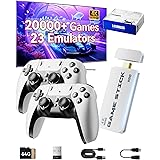Navigating the dynamic landscape of PC building, especially when targeting the “mid-range,” often presents a unique challenge. As the accompanying video aptly highlights, the definition of what constitutes a mid-range gaming PC can vary wildly among enthusiasts and professionals alike. This fluidity makes selecting components a complex endeavor, yet it is crucial for anyone aspiring to achieve solid gaming performance without incurring premium costs.
Indeed, the term “mid-range” lacks a universal standard. Some individuals might categorize a system featuring a modest Ryzen 5 5500 CPU paired with a used RTX 2060 GPU as mid-range. Conversely, others consider anything less powerful than the absolute top-tier, such as a hypothetical 5090, to be within this category. This broad spectrum underscores the necessity of a defined budget, which serves as the anchor for any successful mid-range PC build.
The Evolving Landscape of Mid-Range PC Gaming in 2025
The PC hardware market is characterized by relentless innovation. New generations of CPUs and GPUs arrive regularly, pushing performance boundaries and redefining value propositions. Consequently, what was considered high-end just a few years ago might now sit comfortably in the mid-range tier, offering exceptional performance at a reduced price point. This rapid evolution makes identifying the optimal components for a mid-range gaming PC a moving target, demanding constant vigilance and informed decision-making.
Furthermore, gamers themselves have diverse expectations. A competitive esports player might prioritize high frame rates at 1080p, while a single-player enthusiast may prefer higher graphical fidelity at 1440p. These varying priorities contribute to the ambiguity of “mid-range” and emphasize the importance of understanding personal usage scenarios before committing to a build. Ultimately, a balanced approach considers both current gaming demands and potential future upgrade paths.
Establishing Your Budget: The Foundation of Any Mid-Range PC Build
As suggested in the video, the most critical step in defining a mid-range gaming PC is establishing a clear budget. Without this financial framework, component selection can quickly spiral into indecision or overspending. A defined budget acts as a guiding principle, helping to narrow down the vast array of available hardware to a manageable selection that meets both performance goals and financial constraints.
For many, a practical mid-range gaming PC budget typically falls within the $900 to $1200 range for the system unit itself. This sweet spot allows for a balanced configuration that delivers excellent performance in most modern games without venturing into enthusiast-tier pricing. Imagine if you approached your build without a budget; the temptation to upgrade ‘just one more component’ could easily inflate the cost beyond reason. A clear budget prevents such pitfalls.
Unveiling the 2025 Mid-Range Gaming PC Meta: A Solid Recommendation
Considering the complex factors of performance, value, and future-readiness, a standout combination emerges as the definitive mid-range gaming PC meta for 2025. This highly recommended pairing consists of the 9600X CPU and the 9060 XT 16GB GPU. This specific combination offers an impressive balance of processing power and graphical capability, making it an excellent foundation for a versatile gaming system.
The 9600X CPU provides robust multi-core performance, ensuring smooth operation in demanding games and multitasking scenarios. Paired with the 9060 XT 16GB, which boasts a generous amount of VRAM, this system is exceptionally well-equipped to handle modern titles. Consequently, users can expect to play virtually any game in 1440p resolution with very good settings. This level of performance at a projected system cost of $900-$1200 represents unparalleled value in the current market.
Beyond the Core: Building a Balanced Mid-Range Gaming System
While the CPU and GPU are undeniably the heart of any gaming PC, a truly balanced mid-range system requires careful consideration of other essential components. These elements contribute significantly to overall system stability, responsiveness, and long-term satisfaction. Overlooking them can undermine the performance potential of even the strongest CPU/GPU pairing.
Memory (RAM) for Optimal Gaming
For the recommended 9600X and 9060 XT 16GB combination, a minimum of 16GB of DDR4 or DDR5 RAM is crucial. This capacity ensures that modern games have sufficient memory to operate smoothly, preventing stutters and improving load times. For users who also engage in content creation or extensive multitasking, upgrading to 32GB can provide additional headroom, though 16GB remains the baseline for a robust mid-range gaming PC.
Storage Solutions: Speed and Capacity
The importance of rapid storage cannot be overstated in a modern gaming PC. A fast NVMe Solid State Drive (SSD) is an absolute necessity for the operating system and frequently played games. A 500GB to 1TB NVMe drive offers an excellent balance of speed and capacity for a mid-range build. For larger game libraries or multimedia storage, a secondary SATA SSD or a traditional Hard Disk Drive (HDD) can be added, ensuring ample space without compromising boot or game load times.
Power Supply Unit (PSU): The Unsung Hero
Often overlooked, a reliable Power Supply Unit is critical for system stability and longevity. Selecting a PSU with sufficient wattage and a good efficiency rating (e.g., 80 Plus Bronze or Gold) is imperative. For a system featuring the 9600X and 9060 XT 16GB, a 650W to 750W PSU from a reputable brand would provide ample power and future upgrade potential. Investing in a quality PSU safeguards your other valuable components.
Motherboard Selection for Compatibility and Features
The motherboard serves as the central nervous system, connecting all your components. It must be compatible with the 9600X CPU socket and support the chosen RAM type (DDR4 or DDR5). Mid-range motherboards offer a good balance of features, including sufficient PCIe slots for the GPU, multiple M.2 slots for NVMe SSDs, and adequate USB connectivity. Prioritizing features like good VRM cooling and robust I/O can enhance long-term performance and reliability.
Optimizing Your Mid-Range Gaming Experience
Once your mid-range gaming PC is assembled, several steps can further enhance your gaming experience. Maintaining updated drivers for your GPU and other components is paramount. Graphics card manufacturers frequently release driver updates that improve performance, resolve bugs, and optimize for new game releases. Regularly checking for and installing these updates ensures you are getting the most out of your hardware.
Furthermore, fine-tuning in-game settings can significantly impact performance. While the 9600X and 9060 XT 16GB combo handles 1440p gaming admirably, adjusting settings like anti-aliasing, shadow quality, and post-processing effects can yield higher frame rates without a drastic reduction in visual fidelity. Many games offer optimization guides, allowing you to tailor settings for your specific mid-range gaming PC setup and preferences.









